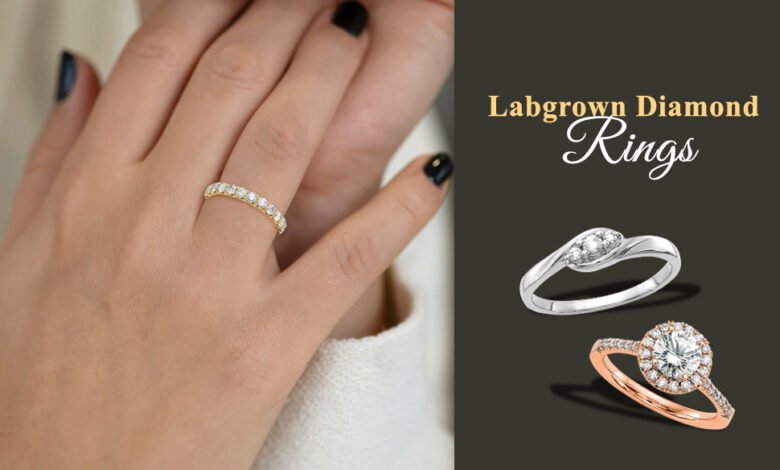
Lab grown Solitaires have become a significant player in the jewelry industry, offering an ethical and cost-effective alternative to natural diamonds. One question that often arises when considering lab-grown diamonds is: how long does it take to create one? Understanding the production timeline of lab-grown diamonds can provide valuable insight into their creation process and help you make informed decisions about your next jewelry purchase.
The Science Behind Lab-Grown Diamonds:
Before diving into the timeframes, it’s essential to grasp the science behind Lab grown Diamonds INDIA. These diamonds are created using advanced technological methods that replicate the natural diamond-forming processes. There are two primary methods for growing diamonds in a lab:
- High Pressure High Temperature (HPHT): This method mimics the extreme conditions found deep within the Earth’s mantle. It involves subjecting carbon to high temperatures (around 1,500°C) and pressures (about 1.5 million pounds per square inch). HPHT diamonds typically take less time to grow compared to the other method and are often used to create diamonds in a shorter timeframe.
- Chemical Vapor Deposition (CVD): This method involves placing a small diamond seed in a vacuum chamber filled with carbon-rich gases. The gases are ionized to create a plasma, which causes carbon atoms to deposit onto the seed, gradually forming a diamond. CVD diamonds generally take a bit longer to grow but offer a high level of control over the diamond’s quality and characteristics.
Timeframes for Lab-Grown Diamonds:
The time required to grow a lab-grown diamond depends on several factors, including the chosen method, the size of the diamond, and the desired quality. Here’s a detailed look at the typical timeframes associated with each method:
1. High Pressure High Temperature (HPHT):
- Growth Time: The HPHT method generally takes between 3 to 4 weeks to produce a diamond. This relatively short timeframe is due to the intense conditions under which the diamond forms. The process is highly controlled, and the conditions are optimized to encourage rapid crystal growth.
- Factors Influencing Time: The size and quality of the diamond can affect the production time. Larger diamonds or those with specific color or clarity characteristics may require more time to achieve the desired results. Additionally, the efficiency of the equipment and the expertise of the operators can influence the timeframe.
2. Chemical Vapor Deposition (CVD):
- Growth Time: CVD diamonds typically require between 4 to 8 weeks to grow. This longer timeframe is due to the gradual nature of the deposition process, where carbon atoms build up slowly around a diamond seed. The process allows for precise control over the diamond’s properties, but it takes more time compared to HPHT.
- Factors Influencing Time: The size of the diamond and the specific conditions used during the CVD process can impact the growth time. Larger diamonds or those with unique qualities may need more time. Additionally, variations in the gas composition and plasma conditions can affect the duration of the growth process.
Comparison with Natural Diamonds:
Natural diamonds take millions of years to form under the Earth’s surface, subjected to extreme pressure and temperature conditions. In contrast, lab-grown diamonds are created in a matter of weeks, making them a more accessible and immediate option for consumers.
Advantages of Lab-Grown Diamonds:
- Speed: The relatively short production time of lab-grown diamonds allows for faster turnaround, which is especially advantageous for those who need a diamond quickly.
- Consistency: Lab-grown diamonds offer a consistent and controlled quality, with fewer variables affecting their appearance and characteristics.
- Customization: The shorter production time allows for more customization options, enabling jewelers to create unique designs and sizes according to individual preferences.
Quality Control and Certification:
Regardless of the growth method, lab-grown diamonds undergo rigorous quality control and certification processes to ensure they meet industry standards. These processes include:
- Grading: Lab-grown diamonds are graded based on the four Cs—carat weight, cut, color, and clarity. This grading is performed by reputable gemological laboratories to verify the diamond’s quality.
- Certification: Certification provides assurance of the diamond’s authenticity and quality. Lab-grown diamonds are often certified by organizations such as the Gemological Institute of America (GIA) or the International Gemological Institute (IGI).
- Inspection: Each diamond is thoroughly inspected for any inclusions, color variations, or other characteristics that may affect its value and appearance.
Implications for Buyers:
For consumers, understanding the production timeline of lab-grown diamonds offers several benefits:
- Timely Purchases: Knowing that lab-grown diamonds can be produced within weeks allows buyers to plan their purchases with confidence, whether for engagement rings, anniversary gifts, or other special occasions.
- Informed Choices: Awareness of the time required to produce different sizes and qualities of diamonds can help buyers make informed decisions and set realistic expectations for delivery times.
- Customization Opportunities: The relatively short production time provides opportunities for custom designs and personalized settings, allowing buyers to create unique and meaningful jewelry pieces.
Future Trends in Lab-Grown Diamond Production:
The field of lab-grown diamonds is continually evolving, with advancements in technology and production methods:
- Faster Production: Ongoing research aims to reduce production times further, making it possible to create lab-grown diamonds even more quickly without compromising quality.
- Enhanced Quality: Technological advancements are improving the ability to produce diamonds with higher clarity, color, and overall quality, offering even more options for discerning buyers.
- Sustainability: The development of more sustainable production practices and the use of renewable energy sources are expected to further enhance the environmental benefits of lab-grown diamonds.
Conclusion:
Lab-grown diamonds offer a compelling alternative to natural diamonds, with a significantly shorter production timeline that ranges from 3 to 8 weeks depending on the method used. The High Pressure High Temperature (HPHT) method is quicker, taking about 3 to 4 weeks, while the Chemical Vapor Deposition (CVD) method typically requires 4 to 8 weeks. This rapid production capability, combined with the ethical and cost benefits of lab-grown diamonds, makes them an attractive choice for many consumers.
By understanding the production process and timeframes, you can make informed decisions about purchasing a lab-grown diamond that meets your needs and preferences. Whether you’re seeking a classic solitaire or a custom-designed piece, lab-grown diamonds offer a modern, efficient, and sustainable option for your jewelry collection.


